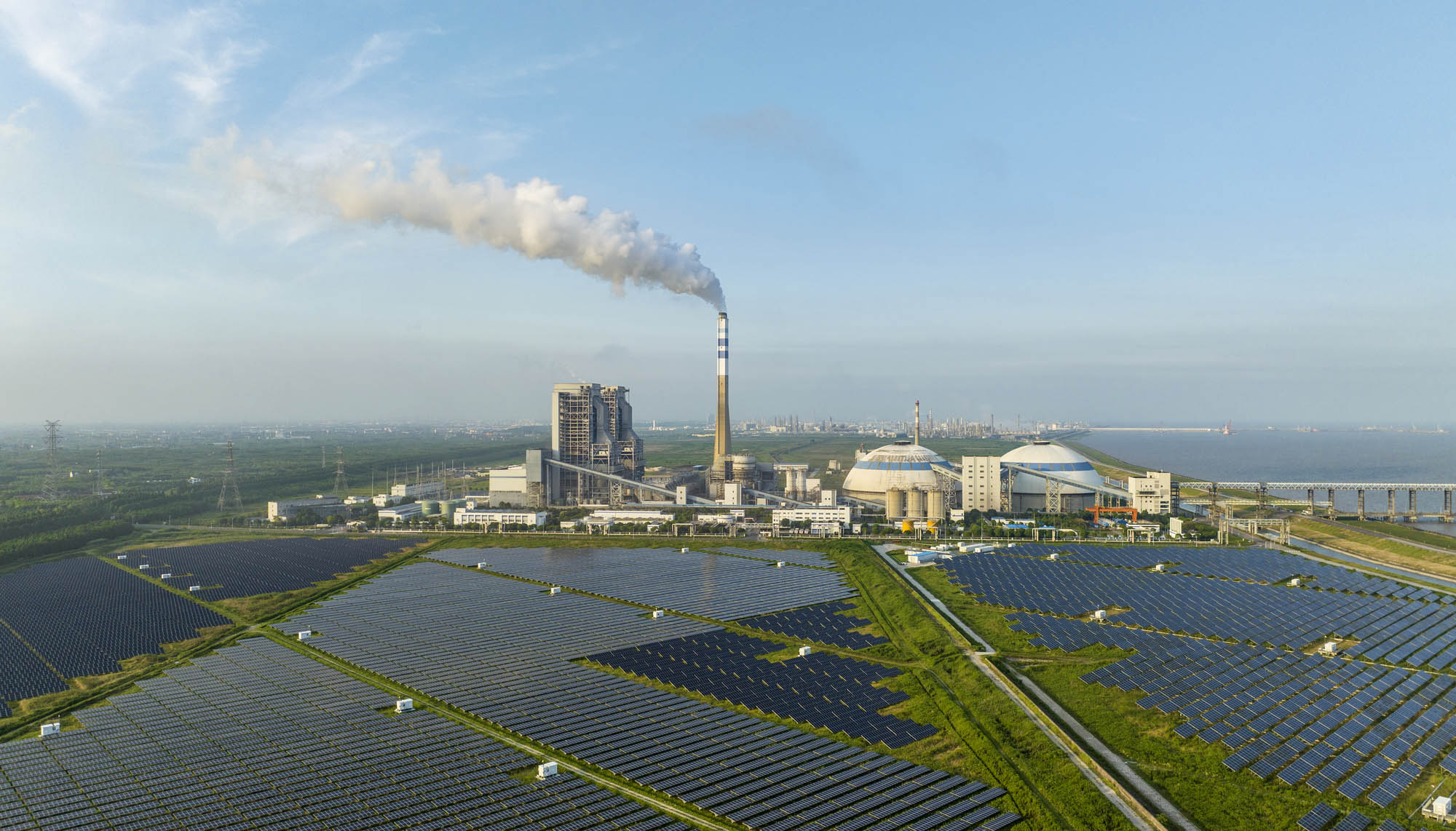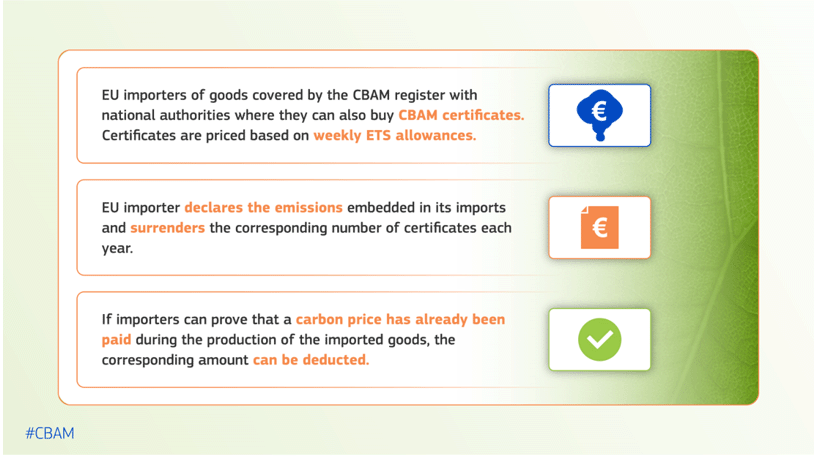
Carbon leakage, the process by which emissions-intensive industries relocate to regions with less stringent carbon regulations, poses a significant challenge to global climate change mitigation efforts. As nations strive to reduce their carbon emissions in an uneven global climate policy environment, there is a growing need for policies that successfully incentivize rapid decarbonization while navigating the carbon leakage issue. This means safeguarding domestic industries as they transition to net zero, whilst also promoting the harmonization of ambitious emissions reduction policies across jurisdictions around the world.
Carbon leakage is front of mind for policy makers. Understanding it, and the leading policy efforts to mitigate it, is therefore essential in understanding the emerging climate policy landscape. That’s why this article breaks down the carbon leakage problem and then explores the EU’s pioneering response – the Carbon Border Adjustment Mechanism (CBAM).
Carbon Leakage
What is it and why is it a problem?
Carbon leakage may occur when one country decides, ahead of others, to implement ambitious policies to encourage industries to transition to carbon-neutral production. This asymmetry in climate policies creates two possible areas of leakage for the leading nation’s economy:
- Direct Carbon Leakage: Domestic producers, in order to avoid increasing compliance costs and remain competitive with non-domestic producers, relocate production to countries with laxer climate regulations.
- Indirect Carbon Leakage: Domestic producers of carbon intensive goods and services must either absorb the increase in compliance costs or pass this on to consumers. The producer may consequently be undercut by imports that have not been subject to equivalent climate-related policies. Over time, the lower price of goods imported from regions with weaker regulation will create a shift in demand from local production to the imported goods, driving up emissions in the exporting countries.
Shifting carbon-intensive activities or industries from places with strict carbon regulations to regions with less stringent or non-existent regulations poses a significant challenge to global efforts to combat climate change. If emissions can simply be shifted elsewhere in response to emissions reduction efforts, it not only negates the environmental benefits of these types of policies but can actually lead to net increases in global emissions. (Carbon leakage is considered a specific subset of ‘trade embodied emissions’. For more information, see our article: Production vs. Consumption: Assessing a Country’s Contribution to Climate Change)
Robust protection against leakage is also critical in giving firms and investors confidence that they can recover the costs of low-carbon investments and remain competitive with firms in other countries.
It should also be noted that not all sectors are equally impacted. For a sector to be at risk, it needs to be associated with high emissions that can’t be easily abated, as well as be easy to relocate production/investment, or be replaced by substitute goods produced overseas. This is why manufacturing, steel production and chemical processing, among others, are usually considered particularly vulnerable to carbon leakage.
How much leakage is actually occurring?
A multitude of factors impact investment decisions, flows of trade, and their associated emissions, such as: relative prices of labor, capital, energy and land; raw material availability and access; policy differences in areas such as taxation or the climate; political stability, and so on. Given all these factors, it is difficult to precisely attribute changes in trade-embodied emissions to specific climate policies, making the quantification of carbon leakage very challenging. But despite these challenges, there is a growing body of research to back up the longstanding theoretical modeling of carbon leakage.
For example, experience with specific emissions reduction policies, such as the EU’s Emissions Trading Scheme (ETS), has revealed that while the image of firms packing up in response to climate policy and moving production abroad is often overly simplistic, direct leakage in the form of shifting capital investment overseas is real and occurring at some scale. Companies fear that being undercut by foreign competition will result in depressed domestic prices and the erosion of domestic profit margins. This ultimately makes countries with less ambitious climate policy agendas seem like safer places to invest new capital for their sector.
In the absence of global convergence around emissions reduction policies and carbon prices, efforts to build clear and ambitious policy frameworks that make investments in carbon-neutral production technologies economically viable will need to carefully navigate the carbon leakage issue. The following section assesses leading responses to the carbon leakage problem.
Ways to Prevent Carbon Leakage
Exemptions and Free Allocation
While several different approaches to help reduce carbon leakage exist, the longest standing and most widespread is the use of targeted exemptions and, in the case of carbon credit schemes, free allocation of credits.
The approach here is simple. Work out which sectors/sub-sectors are at risk of leakage as a result of a new policy, and then create a mechanism by which to directly or indirectly exempt them from the impacts of that policy. In the case of the EU’s Emissions Trading Scheme (ETS), highly exposed sectors are placed on a ‘carbon leakage list’ and receive carbon credit allowances of up to 100% of the relevant sector benchmark for free. There are also smaller free allocations made available to the less exposed sectors. What this means in practice is that the firms on this list incur reduced or zero cost for the carbon emissions released in the production of their goods, allowing them to remain competitive with overseas producers who are not subject to a carbon tax or emissions trading scheme.
Whilst free allocations are often ratcheted down over time, and are therefore more about providing firms a smoother transition and confidence about the future trajectory of emissions costs, there is an obvious compromise being made. By protecting at-risk sectors, policy makers dampened incentives to ramp up modernization and decarbonization within a number of the high-emitting sectors that are crucial to the transition to a net-zero economy.
Whilst these compromises are arguably what made these policies viable in the first place, these concessions reduced the policies’ overall impact and mean that the need to transform traditional polluting industries such as steel, chemicals, cement and aluminum is now far more urgent. For this reason, policy makers are now looking at how they can start applying pressure to these sectors whilst avoiding the problems associated with carbon leakage.
The EU’s Carbon Border Adjustment Mechanism (CBAM)
The EU’s implementation of the Carbon Border Adjustment Mechanism (CBAM) represents a pioneering step in addressing carbon leakage whilst still applying pressure to high-emitting sectors that have traditionally been shielded from emissions reduction policies via exemptions and free emissions allowances.
CBAM is a policy designed to level the playing field for European industries by making sure a fair price has been paid on the carbon emitted during the production of carbon intensive goods that are being imported into the EU. The mechanism ensures that foreign products subject to less stringent carbon regulations abroad face an equivalent cost to those produced within the EU, thus preventing foreign goods from undercutting EU goods as a result of asymmetries in climate policy.
An important and innovative aspect of CBAM is that instead of placing a fixed levy on all imports across relevant sectors, the levy is lifted if it can be demonstrated that the imported good has already been subject to an appropriate cost of carbon. This means that in addition to protecting EU firms from being undercut and discouraging relocation of production, CBAM also encourages global trading partners to adopt stricter carbon policies.
A graphic detailing exactly how this works for EU Importers can be seen below:

(Source: European Commission)
There are two areas of concern emerging with CBAM. Firstly, implementation of CBAM will raise costs for EU importers, which on their part will likely be passed on to consumers. The inflationary impact of the policy is also set to be exacerbated by the fact that the gradual introduction of CBAM is aligned with the phase-out of the allocation of free allowances under the ETS for a number of heavy emitting industries within the EU, making a number of domestic goods more expensive as well.
The second area of concern is the fear of ‘global trade fragmentation’. Whilst CBAM has been designed to be compatible with World Trade Organisation rules, a number of EU trading partners are raising concerns, with the Chinese ambassador to the EU labelling this “yet another green trade barrier.” Taken together, these concerns are likely to make the scaling up of CBAM politically challenging within the EU.
With that said, CBAM has the potential to successfully navigate the carbon leakage issue while the EU continues to ratchet up its climate ambitions. There are also already signs that CBAM’s secondary ambition of encouraging international alignment around ambitious emissions reductions policies is working. For example, the U.K. has already announced plans for its own carbon import tax by 2027, and Canada and Australia are watching EU’s CBAM closely with an eye to introducing their own within a similar time frame.
Parting Thoughts
Countries investigating ways to reduce their emissions while maintaining their onshore production and GDP may experiment with different means to achieve this. Europe has used free emissions allowances to shelter some industries from the effect of carbon prices and is now implementing a carbon tax on foreign goods that have been charged a lower carbon tax in their home country.
As the pressure to reduce emissions increases as key net-zero milestones are approached in 2030, we may expect more countries to implement policies to minimize carbon leakage. Risk professionals therefore need to stay up to date with these policies so they can understand the policies’ impact on their customers, supply chains and their own business.
Tim Walton is a Vice President in the GARP Risk Institute specializing in sustainability and climate risk. His work spans research, program management and content production.
Topics: Transition Risk